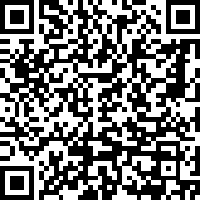|
There is only 1 blog entry from March 1997
 The original Pinky and the Brain The original Pinky and the Brain
One of the few non-computer science individuals in the class was a good friend of mine named David Spencer. His father was a technical whiz with digital media and video production and David was beginning to follow in his footsteps. In fact, he was directly responsible for me getting into non-linear digital video editing well before Apple made it commonplace. He and I would spend hours at his house working in the earliest versions of Adobe Premiere through a dedicated fiber line that ran to his father's office. Much like myself, David definitely sat on the fringes of our web class. While we were both huge contributors to the project and genuinely did a lot of work (in many cases working with new media in ways that nobody else could), our social circles were a little different than many of our teammates. To put it another way, we occasionally would sneak a beer into the class and could frequently be found chewing tobacco as we worked on our projects. This was not a particularly common attitude of the highly intelligent and gifted people we were working with. I bring this point up only to illustrate that the two of us didn't worry about getting caught, much less getting into trouble.
One particular week in the spring of 1997, just two months before graduation, our computer science teacher, Mr. Cunningham, had to leave town. He was attending some sort of conference from Wednesday through the end of the week. Since we had an entire computer science lab at our disposal and no real oversight, David and I were inclined to infiltrate the school's computer system. The only question was how, and to what extent?
Just a few weeks earlier I had made a very interesting and accidental discovery.
All of the computers and printers at our high school had recently been networked together. In fact, it turned out that this was the case for all of the computers and printers in the entire school district. While this sort of networking might sound trivial as the years tick on, it was an incredibly amazing concept in 1997. The very idea that one could create a file and print it across the entire school district in a matter of seconds was astounding to most people; it certainly astounded me. It was also not something that most people outside of the computer realm could really conceptualize at the time.
Almost all of the printers in the school offices were Apple Imagewriters that had been upgraded with network cards. When a user would send a file to be printed, the computer had to first establish a connection with the printer, often called a handshake. Once it established the network handshake, it would send the data along to be printed. Modern printers will store the file in the printer's memory and immediately let the sending computer know that the print job is on its way. The file then sits in the printer's print queue until it gets printed. It's a simple enough concept. But it's also not how our network functioned.
When a user would print a document on one of our school's networked printers, the handshake would occur, the file would be sent, but the handshake wouldn't conclude until the printer had successfully printed the file. On the upside of this methodology, you always knew when your document had finished printing. However on the downside, the print process on the local machine became tied up so long as the file was still in the printer's queue. But what would happen if the handshake occurred, the file was sent to the queue, but the network connection somehow dropped before the handshake was able to conclude?
We typed up a short, non-threatening document that read something to the effect of "Pinky and the Brain have seized control of this computer. Be afraid. Be very afraid." Since the entire district was networked, we set the document to print on every printer across the entire Katy Independent School District. We waited a few moments for the handshaking process to begin across the board, and then pulled the network plug out of the wall.
The discovery I had accidentally stumbled upon was that when a file was placed in the printer queue but the printer was never able to close the handshake (in this case due to the cable being unplugged), the file would sit atop the printer queue indefinitely. This meant that not only would the printer complete the original task, but every time somebody sent another file to the printer, whatever was atop the queue would print again. So one fine day in March, "Pinky and the Brain" became a cover sheet to every document printed across the school district. And oh how the hilarity ensued.
David and I both had a number of friends that worked as office aides. Although we didn't actually tell any of them what we had done, all of them pointed fingers at us within an hour. From what I was told, printers all around the school were alleging they had been compromised by Pinky and the Brain. Teachers and office workers were frantic that their computers had somehow been hacked. As the day went on, so did the printing. It continued on each printer until it had been reset or until the print queue had been manually cleared. Pinky and the Brain was everywhere.
When Mr. Cunningham came back the next week, he was quickly bombarded with teachers and office workers claiming their computers had been hacked; they accused his department of somehow orchestrating the attack, but had no idea what had happened, or how it had happened. He calmly asked each of them if anything appeared wrong with their computers other than the cover sheets. Of course there was nothing else and so he quietly and easily diffused the harmless situation. As I later learned, it turns out that he had been aware of this network flaw for quite some time. Although we never outright admitted to doing it, he definitely knew it was us. With a great smile on his face, he told David and I about all of the commotion it had caused and said he knew it was just a matter of time before somebody stumbled upon that network flaw. Needless to say, he found the whole thing in good fun and remained my favorite teacher well beyond high school.
|
|

